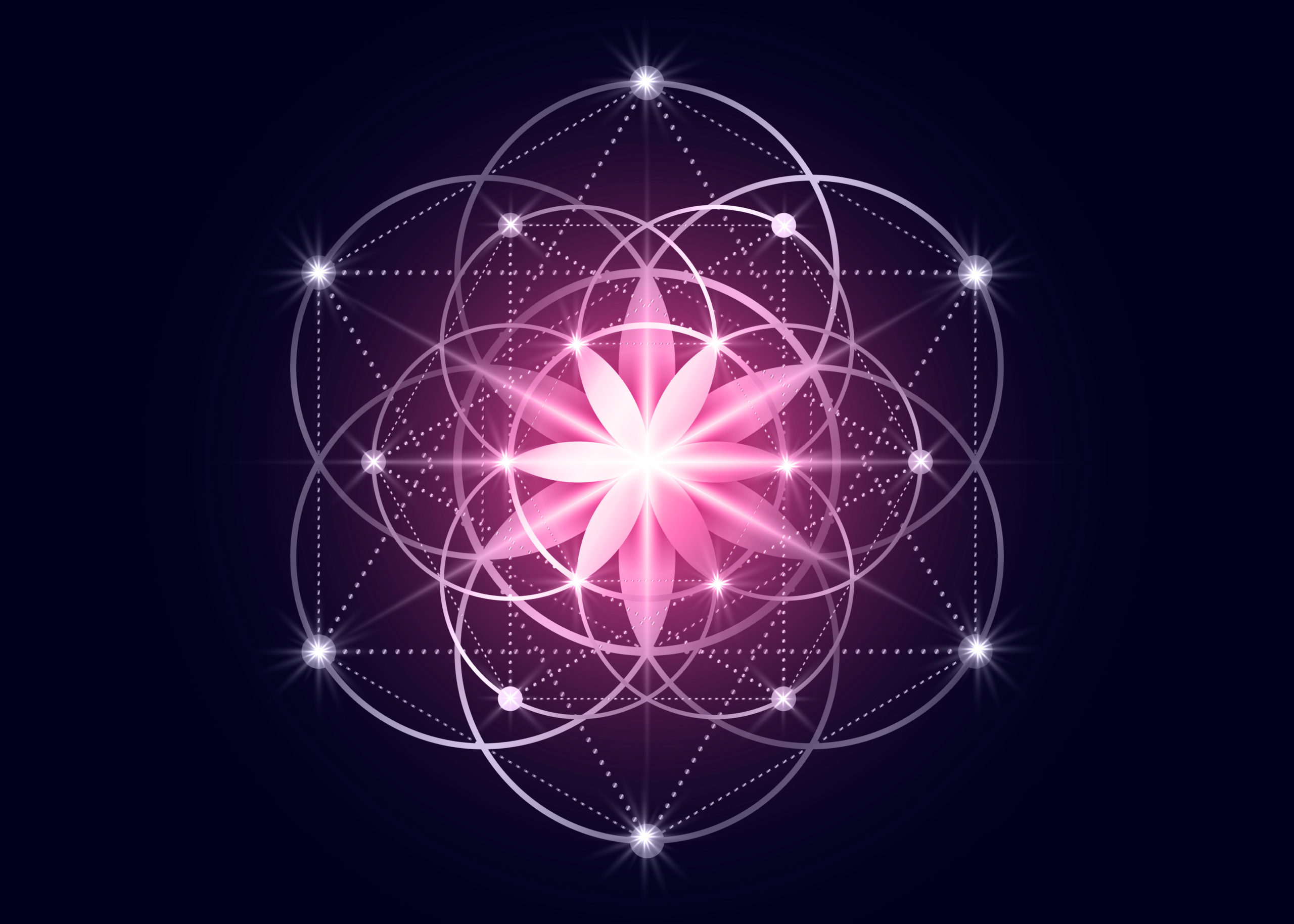
Mandalas came into my life quite naturally when I started organising rituals and meditations. They became a tool for facilitating group connections at a distance, because it was important for me to prepare an energetic space to welcome the participants for the time of the ritual and create a connection between them.
I was intrigued by the fact that the mandala presented itself as a tool for connection. I’m not a great artist and I very rarely draw. It wasn’t until I started thinking about mandalas that I realised that it made perfect sense.
What exactly is a mandala?
The word mandala means ‘circle’ in Sanskrit. Most of the time a mandala is actually represented in the shape of a circle, but not necessarily… the word circle rather indicates a space here, something bounded and infinite at the same time. The idea of the circle refers to the spiral that is integrated into the mandala, because a mandala is movement, it is only motionless on the surface. This movement of the spiral is ascending or descending: we use a mandala to let our thoughts, our feelings, our invisible and intuitive aspects descend into the material form of the mandala or we use the mandala to create a reality, to send energies in a specific direction from the mandala.
In both cases we are creating organisation, we are creating life, because life is naturally organised, we are creating harmony out of chaos. A mandala is a creation that can take the form of a drawing, a fabric, a collection of flowers or leaves, a creation of coloured sand, etc. The form is not so important. What matters is that the mandala organises and creates a structure.
A mandala creates connections between different energy spaces: matter and spirit, between different people, the present and the future, the past and the present, ideas and matter, matter and energy, and so on. In a way, it is a tool for communication between different parts of our being, between different parts of our reality or existence.
A mandala can be used as a meditation tool, a creative tool, a therapeutic tool or a tool for understanding and learning. We can make mandalas “intuitively” and let our creativity flow, decanting our essence onto paper without thinking in a downward movement. This kind of mandala can give us insights into how we feel, what we’re experiencing, our inner life or our dreams.
Or we can create a mandala by being aware of each material, each colour, each symbol that we integrate into it, creating a harmonious whole by placing intentions in our mandala and combining them with energies. In this case, the mandala becomes a magical act of creation.
It would be more accurate to say that mandalas have survived better in the consciousness of Eastern people, because in truth a mandala is something from all times, all cultures and all spiritual traditions. In reality, we’re surrounded by mandalas all the time, and always have been, it’s just that we’ve forgotten their significance, we’ve lost the meaning.
The medicine wheels used in the American-Indian tradition represent the cosmic order organised by association with the cardinal points and the elements; the symbol of yin and yang, representing universal balance, is a mandala in itself; the sacred geometry found in the particles of nature turns our plants and flowers into mandalas, and the stained glass windows of churches often form mandalas, making the connection between the energies represented, the symbolism of the colours and the light that passes through them. A labyrinth is a mandala that captures the energy of the place and organises and transmits it in the design of the labyrinth.
Hildegard von Bingen received her visions in the form of a mandala, literally perceiving different possible structures in the universe. A crop circle is a mandala that links our earthly dimension to other dimensions. Whirling dervishes depict the shape of a mandala revolving around the source of all life, bringing them closer to their centre. The Celtic wheel of life that indicates the different phases of the year is a mandala creating a structure in time, the concept of time itself is a mandala, describing the shape of a spiral and our different incarnations representing the different colours of this mandala, our very planet is a mandala that we all co-create together with our different energies.
The main effect of mandalas is to return energy to its centre, to its axis. It aligns inner and outer, matter and spirit, giving us access to every other particle of existence. It is the creation of cosmic order and the representation of the finite result at the same time.
Everything is structure, everything is interconnected, this very reality is an enormous mandala, like a great multidimensional oriental carpet woven by each being who adds different colours and patterns.


